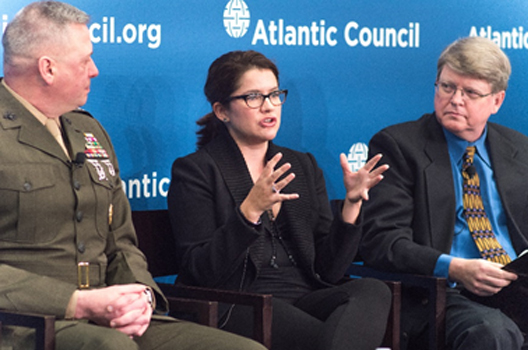 Science fiction has helped everybody from NASA to technology companies explore possible futures. The United States Marine Corps, long known for innovation in warfighting and force development, also embraces the medium. The Marine Corps Warfighting Lab’s Futures Directorate, in an effort to improve how Marines understand the operating environment of 2030 to 2045, has developed a creative collection of imaginative short stories and graphic art. With Marines and other service members writing the narratives, abstract concepts and far-out technologies become tangible and impactful. This publication complements the benchmark Marine Corps Strategic Environment Forecast report and continues Marine Corps efforts to envision, anticipate, and prepare for the dynamic challenges ahead.
Science fiction has helped everybody from NASA to technology companies explore possible futures. The United States Marine Corps, long known for innovation in warfighting and force development, also embraces the medium. The Marine Corps Warfighting Lab’s Futures Directorate, in an effort to improve how Marines understand the operating environment of 2030 to 2045, has developed a creative collection of imaginative short stories and graphic art. With Marines and other service members writing the narratives, abstract concepts and far-out technologies become tangible and impactful. This publication complements the benchmark Marine Corps Strategic Environment Forecast report and continues Marine Corps efforts to envision, anticipate, and prepare for the dynamic challenges ahead.
The Atlantic Council’s Art of the Future program hosted a discussion on the importance and impact potential of using narratives, specifically science fiction, to help servicemen and women predict and strategize for future conflicts. After an opening from the Atlantic Council’s Steven Grundman, Brigadier General Julian D. Alford, the Director of the Futures Directorate, expanded on the work done by the Directorate and its importance to Marines. Following these remarks, Art of the Future Project Director August Cole moderated a panel discussion centered around the lessons learned from the short stories as well as the impact of predictive narratives in general. The panel consisted of Marine Corps Warfighting Laboratory’s Lieutenant Colonel Patrick Kirchner, former Caerus Associates CEO Erin Simpson, and bestselling science fiction author Charles Gannon.
Image: Dr. Erin Simpson, alongside Lieutenant Colonel Patrick Kirchner and Dr. Charles Gannon, discusses the lessons to be learned from futuristic science fiction narratives written by service members
